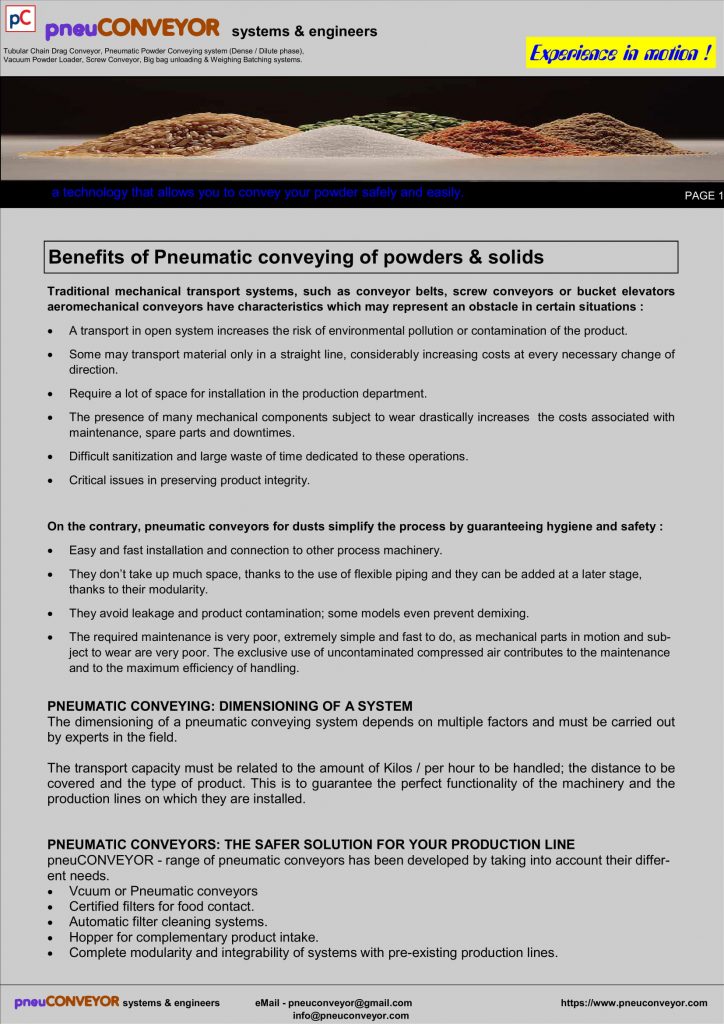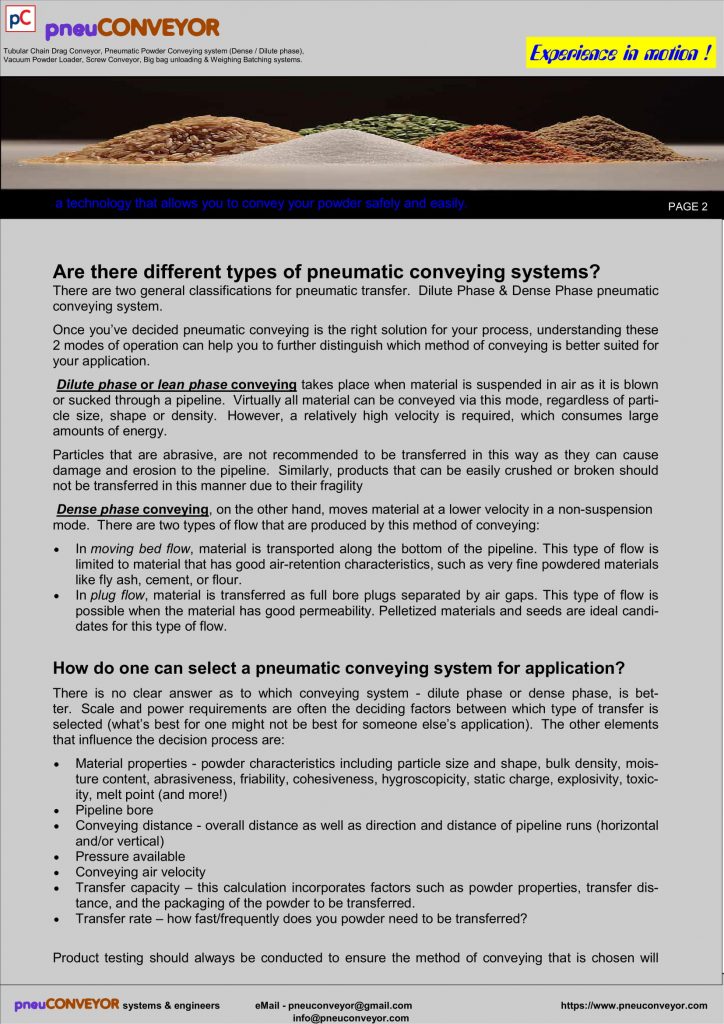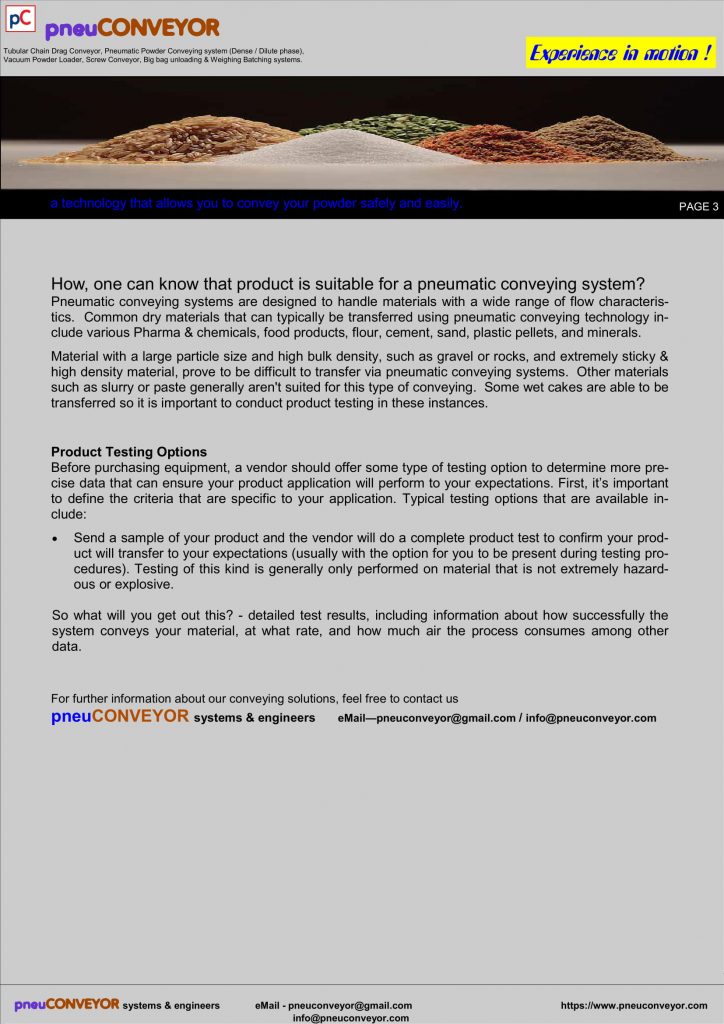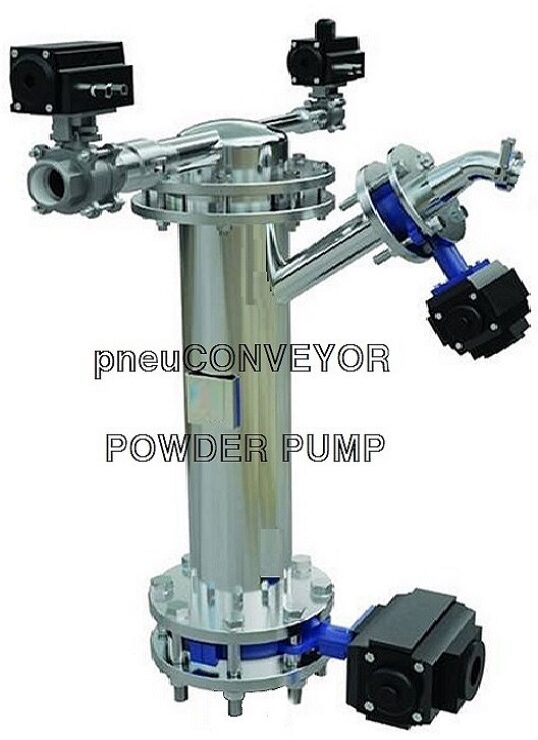


Benefits of pneumatic conveying
Pneumatic conveying is the process of moving solid or granular materials through a pipeline using air or gas pressure. Some of the benefits of pneumatic conveying include:
- Efficiency: Pneumatic conveying is a highly efficient method of transporting materials. It allows for high-volume transportation with minimal energy consumption.
- Flexibility: Pneumatic conveying can handle a wide range of materials, including abrasive, fragile, and hygroscopic materials.
- Reduced material waste: Pneumatic conveying systems are enclosed, which reduces the risk of material spillage and contamination.
- Low maintenance: Pneumatic conveying systems have few moving parts, which reduces maintenance costs and downtime.
- Space-saving: Pneumatic conveying systems are compact and can be easily integrated into existing production facilities.
- Improved safety: Pneumatic conveying eliminates the need for manual material handling, which reduces the risk of worker injury.
Pneumatic conveying is a method of moving bulk materials through a pipeline using gas or air flow. This process is commonly used in industrial settings to move materials such as powders, pellets, and granules from one location to another. The materials are typically transported in a closed system that prevents dust emissions and material spillage.
The process of pneumatic conveying involves several components, including a material feeder, a conveying pipeline, an air mover (usually a blower or fan), and a material receiver. The material feeder deposits the material into the pipeline, where it is carried by the air flow generated by the air mover. The material is then separated from the air flow at the receiver, where it is collected and discharged for further processing or storage.
There are several types of pneumatic conveying systems, including dilute phase, dense phase, and vacuum conveying. Dilute phase conveying is characterized by high air velocity and low material-to-air ratio, while dense phase conveying uses low air velocity and high material-to-air ratio. Vacuum conveying, on the other hand, uses a vacuum pump to create suction and move the material through the pipeline.
Pneumatic conveying is a reliable and efficient method of transporting bulk materials, and is used in a variety of industries, including food processing, pharmaceuticals, chemicals, and plastics. The system is capable of handling a wide range of materials and can be customized to fit the specific needs of different applications.
Overall, pneumatic conveying is a highly efficient, flexible, and cost-effective method of transporting materials that offers numerous benefits to industries that rely on material handling and transportation.

